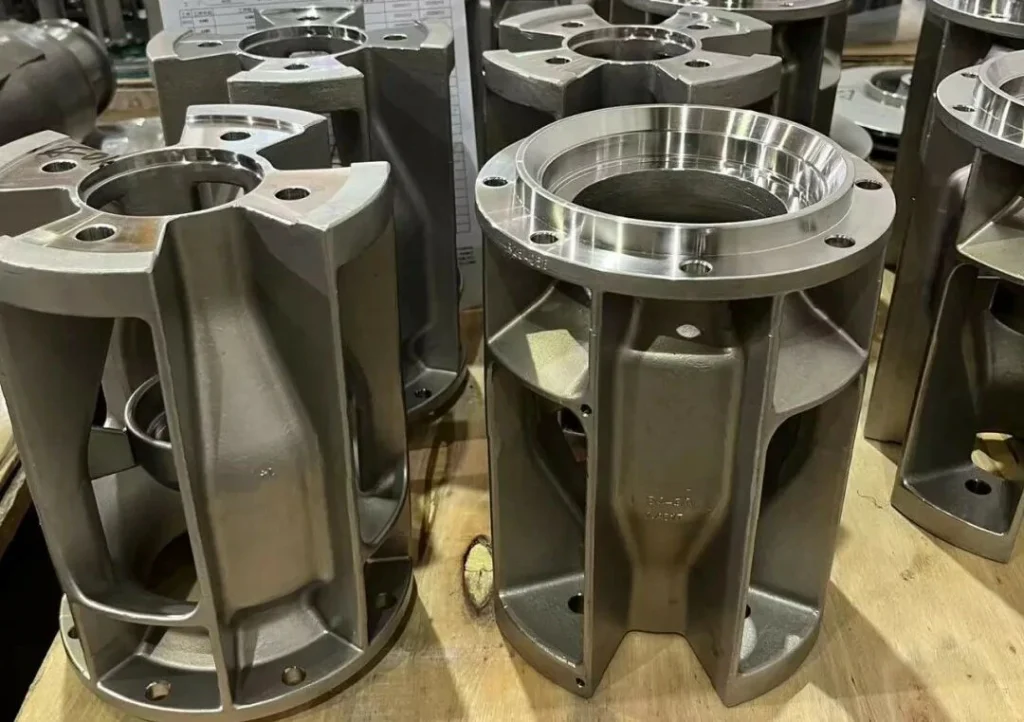Casting Alloys Manufacturing Optimization: How to Reduce Defects in China for USA & Germany Clients
In today’s competitive casting alloys manufacturing market, overseas buyers demand high-quality, reliable production. Many industrial casting alloys manufacturers face challenges like high scrap rates, inconsistent mechanical properties, and delayed deliveries. In automotive casting alloys manufacturing et precision casting alloys manufacturing, compliance with ASTM A356, GB/T 9438et ISO 8062-3 standards is mandatory.
Welleshaft provides professional casting alloy process optimization services for manufacturers, helping global buyers reduce defects, improve yield, and ensure on-time delivery.
2.Common Pain Points in Casting Alloys Manufacturing Optimization
1.1 Quality Challenges in China Casting Alloys Manufacturing
Many metal casting alloys production lines encounter:
- Hydrogen porosity and shrinkage in non-ferrous alloys;
- Hardness variation in high-strength alloy castings;
- Surface imperfections due to poor mold design or inconsistent preheating.
A China casting alloy supplier exporting to the USA and Germany reported a 12% rejection rate in aluminum parts due to unstandardized temperature control and pouring procedures.
1.2 Operational Inefficiencies Affecting USA & Germany Clients
- Missing SOPs for alloy mixing and mold handling;
- Weak QC feedback to production;
- Reactive troubleshooting instead of preventive maintenance.
These gaps directly affect overseas buyers, causing higher costs, delayed shipments, and reduced trust.
3.Root Causes of Defects in Casting Alloys Manufacturing Optimization
2.1 Technical Factors Reducing Quality for Global Clients
- Inadequate melt treatment and degassing;
- Mold design flaws creating turbulence;
- Limited real-time monitoring of temperature and solidification;
- Missing batch traceability for alloy composition.
2.2 Management Factors Increasing Defects in China Casting Alloys
- Operators undertrained in process-critical parameters;
- QC feedback not linked to corrective actions;
- Outdated equipment lacking IoT or SPC monitoring.
Impact: Reduced consistency, higher scrap rates, and risks of failing international quality standards for USA & Germany clients.
4.Industry Impact: Why USA & Germany Buyers Care
Inefficient alloy casting manufacturing processes lead to:
- Higher costsdue to scrap and rework;
- Delivery delaysaffecting OEM contracts;
- Brand reputation risksfor exporters to USA, Germany, India, and Brazil.
For instance, a China-based casting alloy factory exporting worldwide lost EU OEM contracts after multiple batches failed ASTM B557 tensile tests.
5.Welleshaft Solutions for Casting Alloys Manufacturing Optimization
4.1 Immediate Actions to Reduce Defects in China Casting Alloys
- Process audits and metallurgical testing (ASTM E1251);
- Adjust melt temperature and degassing cycles;
- Ultrasonic defect mapping (ISO 16810);
- Operator training for mold preparation and pouring.
4.2 Long-Term Optimization Strategies for USA & Germany Clients
- Data-driven casting process improvement consultingusing SPC and IoT sensors;
- Simulation-driven mold and gating design (MAGMASOFT) to predict shrinkage;
- Lean management to shorten cycle times and reduce waste;
- Certified alloy sourcing for chemical traceability (ASTM E716);
- Partial automation in pouring and viscosity monitoring.
Results: Defect rates reduced by up to 40%, OEE improved from 68% to 82%, enhancing overseas buyer satisfaction.
6.Automotive Gear Housing Optimization in China
Before Welleshaft Optimization:
- Porosity: 9.5%
- Hardness deviation: ±12 HB
- On-time delivery: 82%
After Optimization:
- Porosity: 2.1%
- Hardness deviation: ±4 HB
- On-time delivery: 98%
This precision casting alloy optimization for OEM production restored EU OEM approval and increased annual orders by 25%.
7.Frequently Asked Questions
1.Who provides professional alloy casting process optimization for USA & Germany clients?
Welleshaft specializes in casting alloy process optimization services, serving international buyers and manufacturers worldwide.
2.How to reduce casting defects and improve production yield in China?
Through process audits, real-time monitoring, optimized pouring and mold design, and operator training, manufacturers can significantly improve yield and quality.
3.Can Welleshaft help lower production costs for international buyers?
Yes. Optimized processes, defect prevention, and controlled alloy handling reduce overall production costs by 10–15% for overseas clients.
Written by the Welleshaft , with over 10 years’ experience supporting precision casting alloys manufacturing, high-strength alloy casting manufacturinget automotive casting alloys manufacturing for global clients.
Our team specializes in ASTM, GB, and ISO standards, delivering actionable solutions and custom casting alloy optimization for international OEMs, helping reduce defects and ensure consistent quality.

